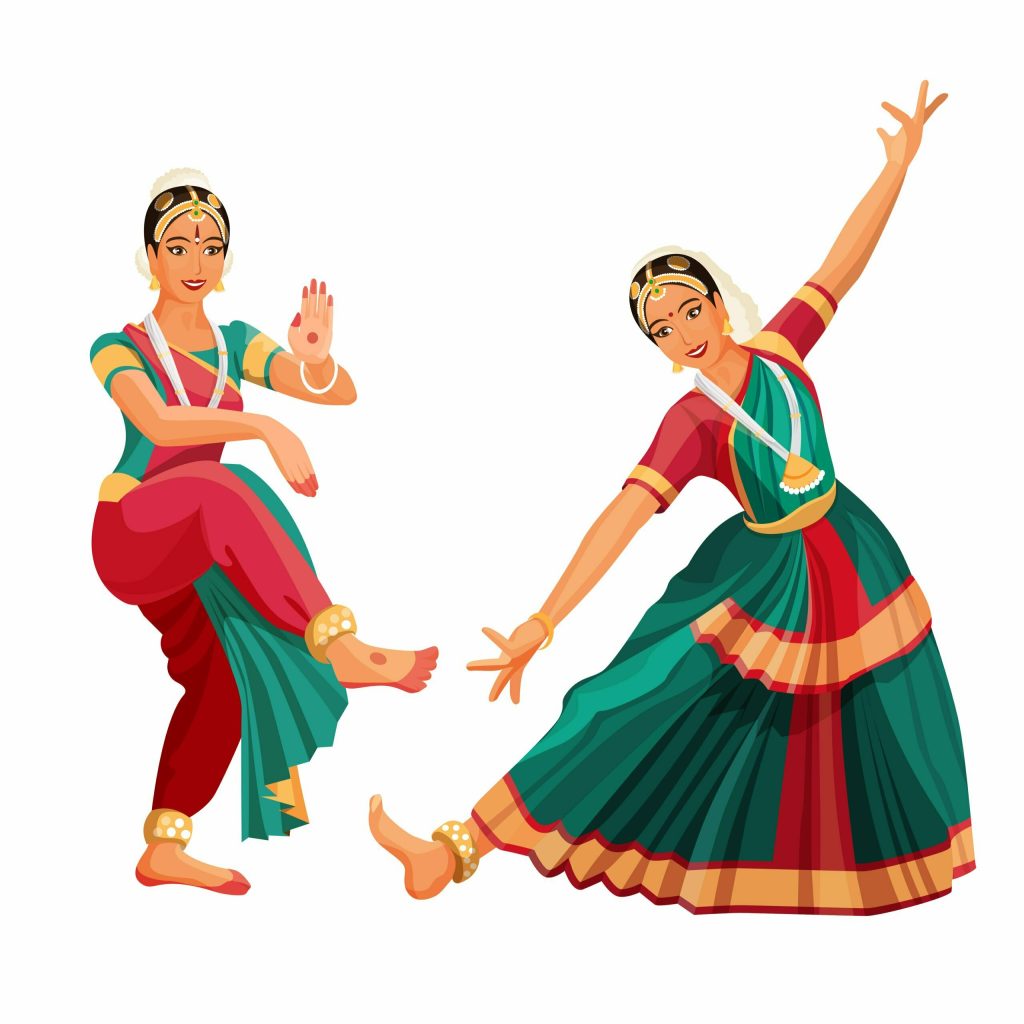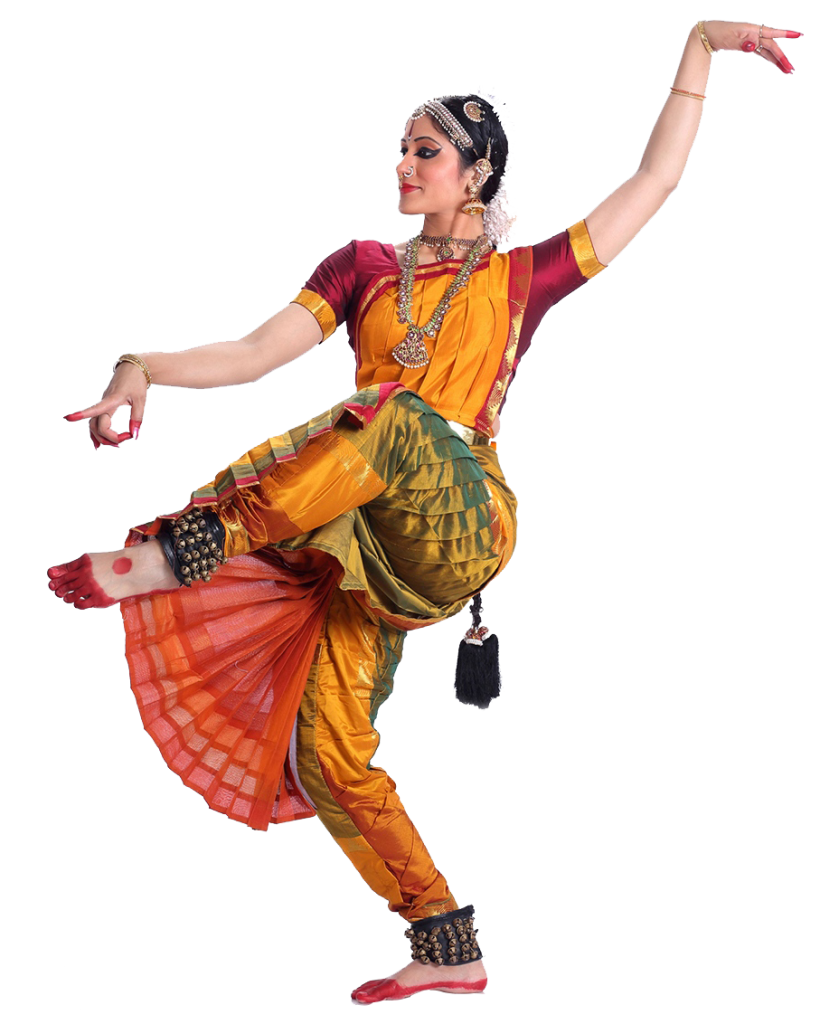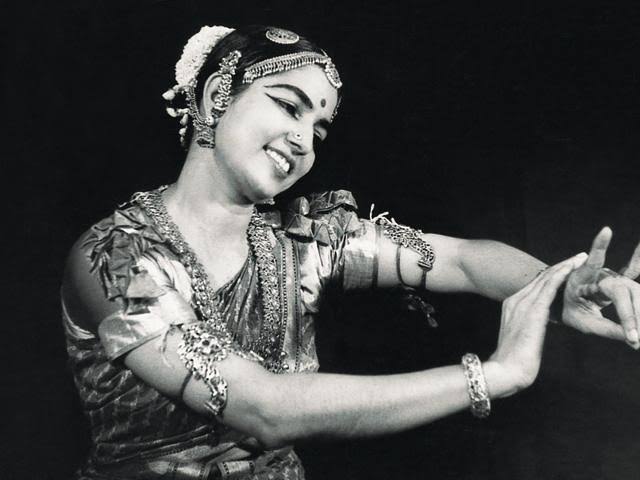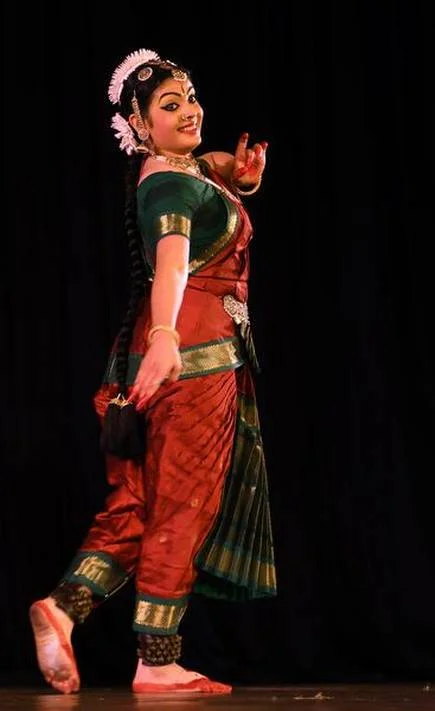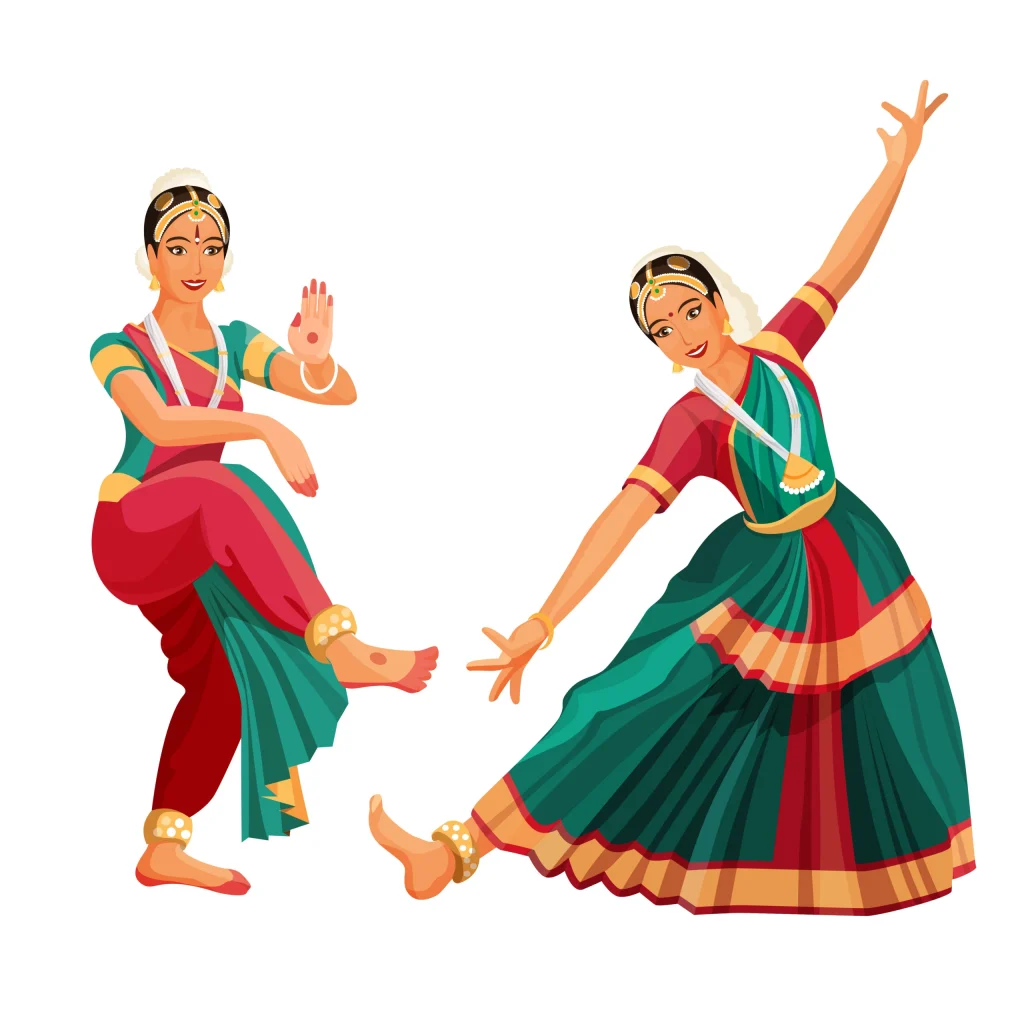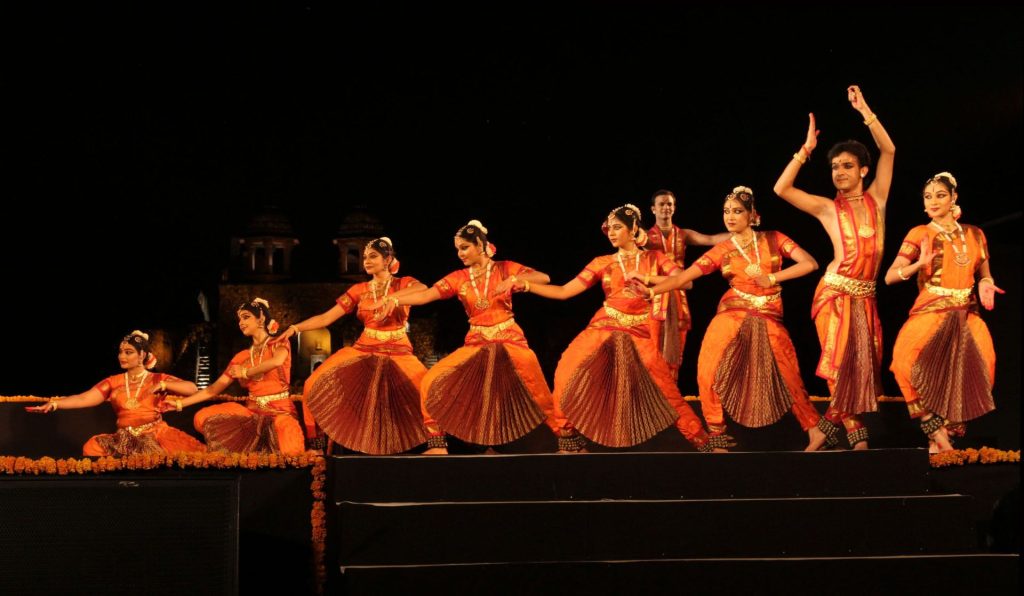Bharatnatyam is one of the 8 classical dance forms of India. In this lesson, we will learn about sections, styles, levels, adavus, instruments commonly used in Bharatnatyam and various dance mudras.
- What is Bharatnatyam Dance?
- The 6 sections of Bharatanatyam
- What are the different styles of Bharatanatyam?
- How long does it take to learn Bharatnatyam?
- How many adavus are there in Bharatnatyam?
- What are the instruments used in Bharatnatyam music?
- What are the various mudras of Bharatnatyam?
- How to learn Bharatnatyam?
What is Bharatnatyam Dance?
Hailed as the oldest classical dance form of India, Bharatanatyam is believed to have originated in the Tanjore district of the South Indian state Tamil Nadu. It is a highly popular classical dance form. The roots of Bharatnatyam are related to Bharata Muni’s Natya Shastra. Like most of the classical dance forms of India, Bharatnatyam was also a devotional temple dance in ancient times. Since it was performed by ‘devadasis’, it was earlier known as ‘Daasiyattam’. ‘Sadhir Attam’ was another name for this dance form.
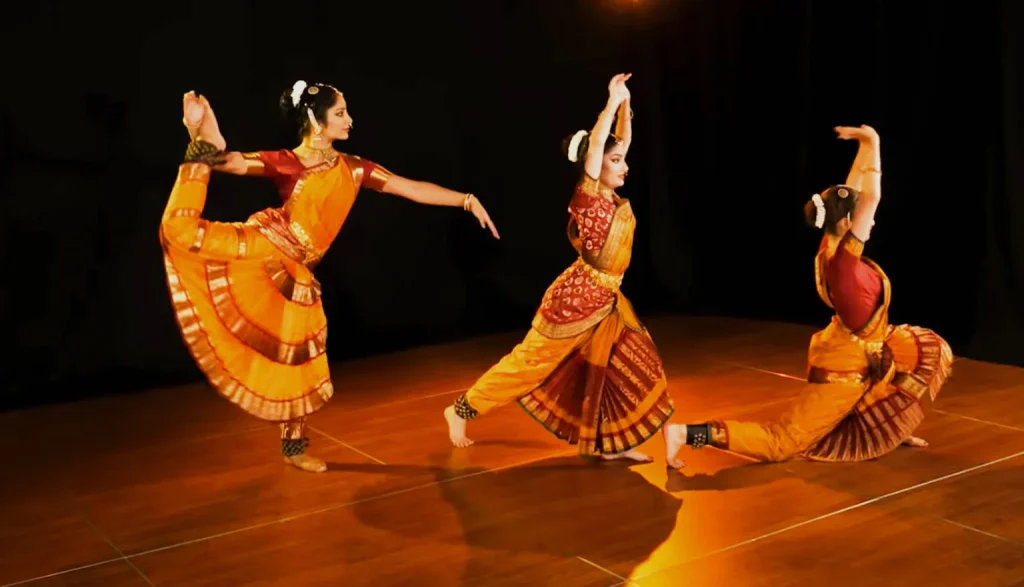
While it almost lost its significance during the British rule in India, it was revived later when a cultural academy was set by two dancers. These dancers were Rukmini Devi and E. Krishna Iyer. This beautiful and graceful dance form relies on technique and grammar of body movement. Facial expressions and mudras are also an essential part of Bharatnatyam, like other Indian classical dance forms. Bharatnatyam is not simply a popular classical dance form, but is also considered an excellent cardio exercise beneficial for blood circulation in the body and keeps the muscles toned.
Since classical dance forms are detailed concepts in themselves, here are a few questions related to Bharatnatyam, which provide more information and throw light on the different aspects of this dance form.
The 6 sections of Bharatanatyam
A Bharatnatyam performance typically consists of six sections. They are-
- Alarippu
- Jatisvaram
- Sabdam
- Varnam
- Padam
- Tillana.
The performance commences with Alarippu, which is an invocation thanking gods and the guru, seeking their blessing. It is also like a warm-up before the actual dance starts. This is followed by Jatisvaram, in which melody is added to the dance. The drums begin the Carnatic music rendition and dancers synchronize body movements to the beats.
Sabdam is the third section. It is the addition of expressed words to the dance. And is followed by Varnam, which is the core of a Bharatnatyam performance. There are expression and footwork in this stage. The dancer narrates the story with hand and body movements. Varnam is the main component of the entire dance. Next is the Padam, where Abhinaya is added. The music lightens and the dance becomes more engrossed.
The performance then concludes with Tillana, which is the climax section of the dance. There is also an additional seventh section in a
performance, which is called ‘Shlokam’ or ‘Mangalam’. Though it is not a part of the typical dance routine, it is the part where the dancer seeks the blessings of everyone around.
| Section | Bharatanatyam Section Name and Purpose |
| 1 | Alarippu (Thanking God) |
| 2 | Jatisvaram (Melody added to the dance) |
| 3 | Sabdam (Addition of expressed words to the dance) |
| 4 | Varnam (Core of Bharatanatyam Dance) |
| 5 | Padam (Abhinaya) |
| 6 | Tilana (Climax section) |
| 7 | Shlokam or Mangalam (Seeks blessing) |
What are the different styles of Bharatanatyam?
While it originated in Tanjore, Tamil Nadu, Bharatnatyam travelled across the country as an art form and hence blended with different places and personalities, lending it different styles. The style of this dance form heavily relies on the person who is teaching it. Every guru has their own style of sharing their knowledge of an art form.
However, there are 3 different Bharatanatyam styles that are commonly known and practised. The Melathoor style draws from the devadasi tradition and Melathur Bhagavad Mela. In this particular style, feet are not stamped on the floor but anklets are used to match the rhythm. ‘Pancha Nadais’ and ‘Gati Bhedas’ makes Melathoor style different from other styles of Bharatnatyam.
The emphasis in this one is on Sringara more than Bhakti. The principles of Natyadharmi and Lokadharmi are applied to it. This style is very expressive and has spontaneous movements. The Kalakshetra style is more like a simplified version of the Pandanalloor style, it has sharp and controlled body movements. There are only a few Sringara movements in this style.
The Kalakshetra or Pandanallur style has its roots in the Pandanalloor village of Tamil Nadu. It is feminine, slow and rhythmic style with mostly sitting positions. The Vazhavoor style is rich in Sringara and makes use of natural expressions.
How long does it take to learn Bharatnatyam?
While there is no particular age to start learning any dance form, usually dancers are seen pursuing the art from a young age. Irrespective of whenever you start learning, proper training of this dance form requires a period of 4-7 years. The time is taken to complete the training also highly depends on the student’s perseverance towards the dance form, time dedicated regularly and learning capability.
How many adavus are there in Bharatnatyam?
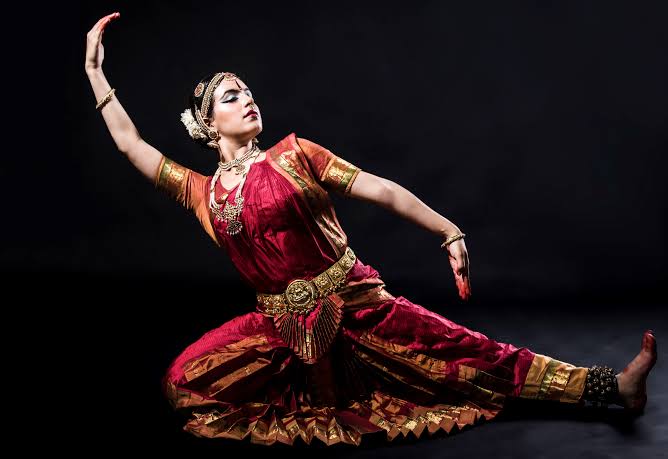
While you might have heard the word ‘adavus’, you may not know what it exactly means. An adavu is a combination of the position of the legs, standing posture, hand gestures and walking movement. In the language of Bharatnatyam one can define it as a blend of Mandalam, Chari, Nritta hastas and Sthanakam. When these four elements are in-complete synchronisation or Taal, it forms an adavu.
There are 13 groups of adavus, namely-
- Tatta adavu
- Natta adavu
- Visharu adavu
- Tattimitti adavu
- Tirumanam adavu
- Murka adavu
- Jati adavu
- Kuditamitta adavu
- Mandi adavu
- Sarikal adavu and so on.
Adavus are an essential part of the process of learning this dance style. They help to attain control over body movements and understand the rhythm and speed of the dance form. Adavus are like the alphabets of Bharatnatyam and are taught usually during the first year of the training.
To learn more, visit our detailed lesson on Bharatanatyam Adavus
What are the instruments used in Bharatnatyam music?
Carnatic classical music is an essential part of performance. Veena, Kanjira, Manjira, mridangam, nadaswaram, nattuvangam, violin and flute (also called Venu) are the instruments used. The vocalist in a Bharatnatyam performance is called ‘Nattuvanar’. It is the same person who conducts the performance, as well.
What are the various mudras of Bharatnatyam?
Bharatnatyam comprises of over fifty-five root mudras. These mudras or hand/finger gestures are used to communicate the narrative of the dance performance.
There are two types of mudras in Bharatnatyam- the one hand mudras called ‘Asamyukta Hasta’ and mudras requiring both hands called ‘Samyukta Hasta’.
There are thirty-two, one hand mudras like-
- Pataka
- Tripatkata
- Ardhachandra
- Shikhara
- Kapitta
- Mayura
- Arala
- Suchi
- Chatura
- Mukula; to name a few.
While some out of the twenty-three, two or double hand mudras are- Pasha, Kilaka, Garuda, Matsya, Varaha, Chakram, Shankha, etc. Apart from the fifty-five root mudras, there are several others that are used to enhance the beauty of the dance.
To learn more, visit our detailed lesson on Bharatanatyam Mudras
How to learn Bharatnatyam?
While there are individual and group classes easily available for learning this dance form, it is always better to seek training under a qualified professional Bharatnatyam teacher. Nowadays, online classes are also an easy option. If it is difficult for you to attend a class in person, you can learn the dance form online, by enrolling yourself in a suitable dance programme.
To learn more, visit benefits of learning Bharatanatyam.
Share with your friends
